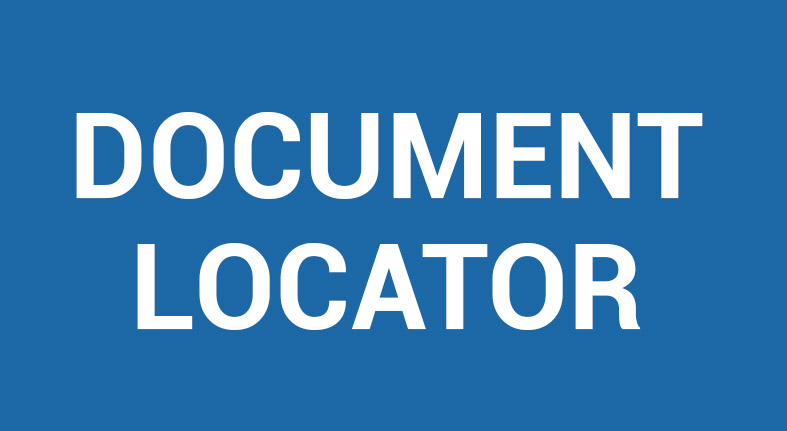What is Document Management?

Document Management improves efficiency and ensures reliability.
Document Management is the process of capturing, storing, tracking, and routing documents in order to increase efficiency in a business or organization. In the early days of document management, manual methods were used for tracking paper documents using filing cabinets, file storage rooms, or mail rooms. Today’s document management systems focus on how to manage electronic documents such as Microsoft Office files, PDFs, and scanned copies of paper files. Document management software can range from small, standalone systems to large-scale enterprise solutions.
What are the key components of a Document Management System?
Document Management systems can vary widely depending on the industry they are geared for and the tasks they are accomplishing. For example, some businesses may be focused on managing records and processes that are governed by regulations and industry standards (such as ISO-9001). Other businesses may have more general needs for document management in order to streamline processes that are common to most organizations. In most all cases, the components of a document management system typically include the following:
Metadata and Indexing
Metadata is information associated with a file (such as creation date, last updated, file format, author, and more). All files have metadata, but when files are added to a document management system additional metadata is typically added in order to assist with organizational requirements. For example, custom profiles and properties may be added to a file in order to make them easier to categorize and locate. This can be done manually as users import files into the system, or automatically by pulling information from the document itself, or by automatically assigning values to a document based on where it is filed.
Document Importing
Documents can be imported into a document management system in several different ways. Paper documents are typically scanned into the system and stored as digital files. Some systems incorporate Optical Character Recognition (OCR) software that converts the image of the document into searchable text so it can be more easily found. Files that are already digital can often be imported into a document management system via drag-and-drop, or through “save-as” options integrated into other software applications such as Microsoft Office.
Document Storage
Many businesses require a document storage solution that goes beyond just holding a digital file in a specific folder. Some documents must be managed over the course of their life-cycle, which can include setting dates for documents to be created, migrated, archived, and ultimately deleted from the system. Some document management systems have the capability to automate this processes and alert stakeholders when action is needed.
Search and Retrieval
When searching for a specific file or a group of files, it is helpful when a system has several search criteria options. The ability to search for metadata associated with the file, as well as the contents of the file itself, can help to ensure effective results. Also, the ability to save search criteria in the form of search templates will save time when a user needs to perform a similar search at a later date.
Collaboration
When multiple people are working on files, collaboration can sometimes be a tricky endeavor. Copies of the file must be sent back and forth, and it’s difficult to determine which version is the latest or how the document has changed over time. Many document management systems incorporate file check-out and check-in functionality. This feature coordinates work by different people. Upon check-in, a new version of the file is created. A complete history of document changes is captured, and it’s always clear which version of the file is the latest.
Version Control
Once a file has been modified and checked-in, a document management system will typically create a new version of that file and mark it as the latest version. This allows for a complete history of the document’s development to be saved and made readily available should the need arise to revert to an older version. The version control process typically takes place automatically and with very specific parameters and naming conventions. This helps to reduce the inconsistencies and confusion that result when ad-hoc methods are used by individuals. In some systems, sub-versions of files can also be created that allow users to take a document in new directions without compromising the progression of the main version.
Automated Workflow
Automated workflow processes help improve efficiency by standardizing and automating repeatable document procedures. When documents are processed manually, they are prone to user errors and misunderstandings of how documents should be routed. With an automated, rules-based workflow systems, program administrators can create rules that dictate the flow of documents. For example, when a manager approves an invoice, it can then be automatically routed to accounts payable. More complex workflows can be created that include rules such as conditional branching, time-out events, notifications and reminders, and more. Workflows can be monitored in reports, allowing program administrators to determine if improvements can be made.
Security and Compliance
Document security and compliance is a critical component to any document management system. Most businesses and organizations must meet compliance requirements when it comes to the management of certain documents. These requirements can determine how and when a document is created, stored, and removed from the system. Limiting access to certain documents, especially documents containing sensitive information, is also a critical component of proper compliance and security. Most document management systems incorporate role-based security for all users, which allows for the creation of customizable roles and privileges at document and folder levels. Finally, document logs can be created to determine which users have accessed a file and when.
The Key Benefits of Document Management
Document Management has the ability to fundamentally improve how businesses and organizations operate. While it’s clear to see how the basic features of document management (search, automation, versioning, etc.) can improve the day to day efforts of managing files, what is often overlooked is the broader impact a system can have on the business. In some cases, it can radically improve how a business operates. Here are a few ways document management can fundamentally improve a business:
Consistency and Organization
Whether you’re trying to manage file cabinets full of paper or thousands of electronic files stored on a shared file server, consistency and organization is a challenge. A document management system replaces time-consuming and error-prone file management efforts with automation and consistency. Files are named, organized, and managed according to pre-set guidelines.
Intelligence
File cabinets do one thing, they hold paper. They can’t tell you where to find a missing document or who accessed it last. They also can’t tell you how a document has changed over time, where a document should be filed, and how long it should be retained. A document management system contains smart tools that allow you to manage files throughout their lifecycles. Built-in intelligence automatically moves documents along their path and informs users what actions to take.
Harmony Throughout the System
When a document management solution is at the foundation of an organization’s file management efforts, it creates a harmony across departments and systems. For example, connections between document management systems and other line of business systems, like ERP, HRIS, or accounting systems, maintains accuracy of how documents are labeled, organized, and secured. When all departments are working with the same underlying document management system, the processes are seamless and requires very little effort.
Beyond Paper
For centuries paper has been the only reasonable way to store and manage information. Now that we have entered the digital age, we are quickly moving past this costly and inefficient method. While basic file systems are an improvement over paper, they lack the intelligence and sophistication of a truly robust document management system. An effective document management system can serve as a foundation for businesses and organizations to ensure operations and processes are run in the most effective and efficient way possible.
What to look for in a Document Management System.
Not all document management software solutions are created equal. Some systems are geared for industry specific needs and regulations. When searching for a document control system, it’s important to find a system that is flexible while at the same time meets your organizational requirements. Below are a few features that all good document control system should have:
Watch the document management video to learn more
Ready for a Demo?
Take the first step towards streamlining your processes and enhancing collaboration with Document Locator. Request a demo today and discover how our document control solution can help your organization.
Fill out the form to get started.
